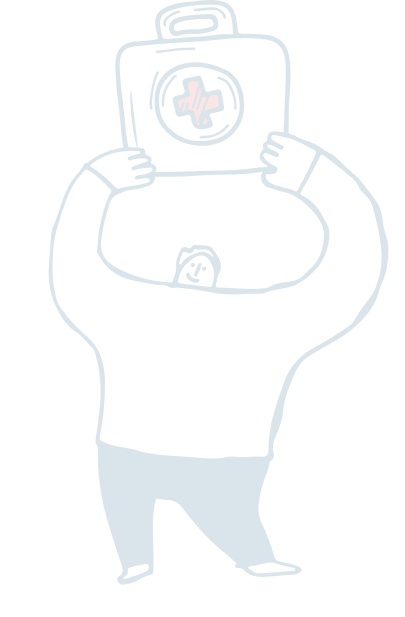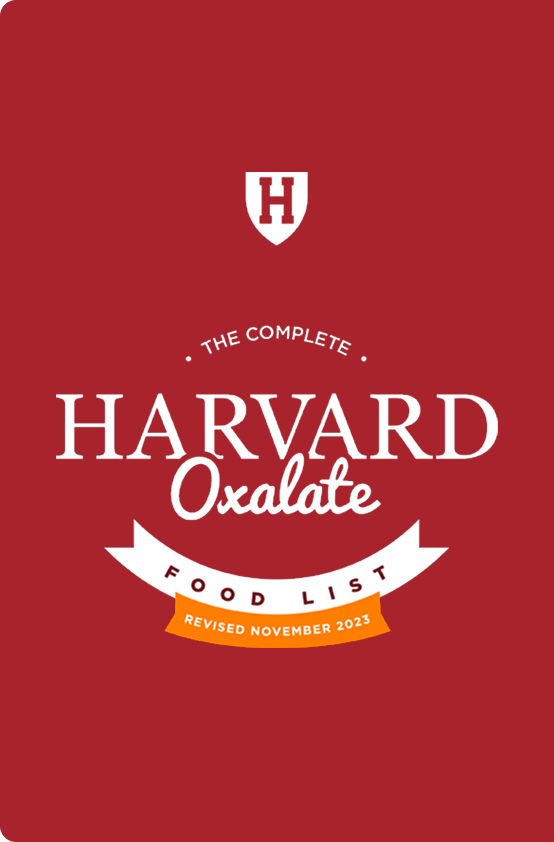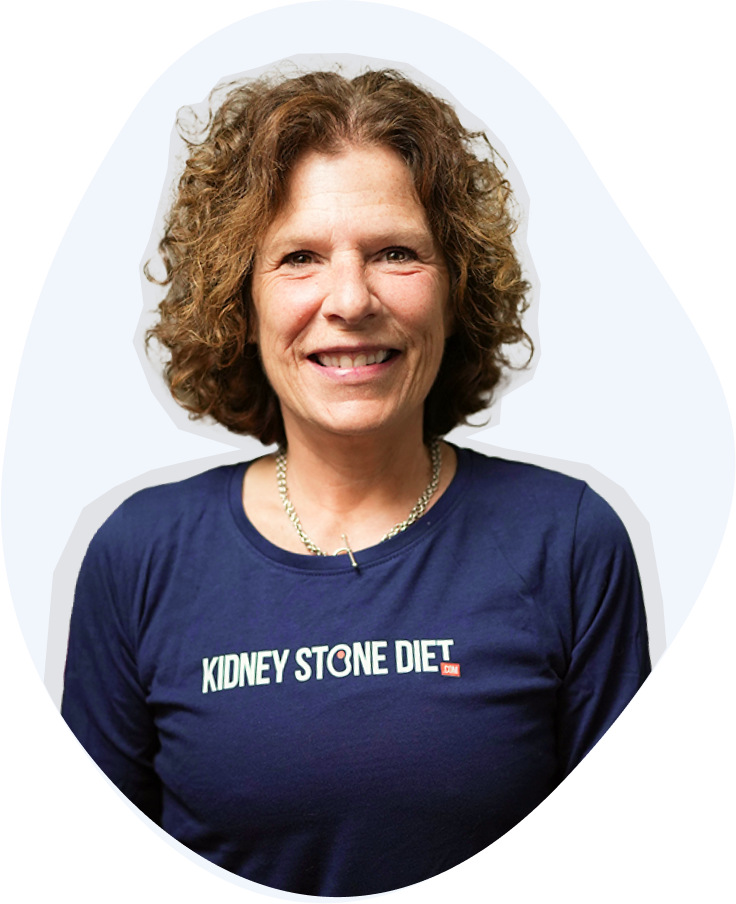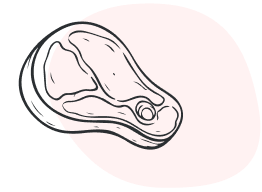Prevent Kidney Stones Once and for All.
Welcome to Kidney Stone Diet®. I’m Nurse Jill and I help stone-formers just like you lower stone risk through practical knowledge and lifestyle changes.
Here are just some of the things you’ll find here:
THE way to prevent new stones and reduce risk by 80%
Tons of free resources to get you started right now
Delicious low-oxalate recipes designed for stone prevention
Support from people who know what you’re going through
Access to me, Nurse Jill, you’re personal prevention specialist

A note from Nurse Jill
I know why you’re here and I can help.
You are near your wit’s end. Whether you’ve made one kidney stone or many, you’re here because you never want to feel that pain again.
You woke up in the middle of the night writhing in pain, thinking you’re not long for this world. After suffering alone, you wake up your spouse—“It’s time to go to the ER.”
Once there, the doctor gives you some relief with an IV of pain medication. Next comes the ultrasound or CT—the diagnosis will be that YOU HAVE A KIDNEY STONE.
You leave the ER with a strainer, a prescription for pain meds, and hopefully, a referral to a urologist.
After speaking with your urologist, you’re given a low-oxalate food list and instruction to “drink a gallon of water per day.”
“What the heck is oxalate?” you mumble under your breath. And, “how am I supposed to drink that much water when I’m a teacher/pilot/trucker?” “How did this happen when I eat so healthy?”
Does this sound like you?

There is a solution to your kidney stones.
Drawing from my work with world-renowned University of Chicago nephrologist, Dr. Fred Coe, and the thousands of patients I’ve taught over the past 26 years, I’ve created a simple, self-guided online video course, meal plans, cookbooks, and group coaching to help you prevent kidney stones for good.


Download your Oxalate Food List for free!
Get your FREE copy of our Harvard Oxalate List (2nd Edition) as well as the Orginal Harvard Oxalate List.
Also see our Searchable Oxalate List that you can use right on your phone.

Who is Jill Harris?
I am the Kidney Stone Prevention Nurse who, with her mentor Dr. Fred Coe, created the kidney stone prevention guidelines now known as the Kidney Stone Diet®.

“Thank you Jill Harris for giving all of us the tools and education we need to beat kidney stones. Thanks to you I’m now two years ten months kidney stone free!”

“I have been following the Weekly Meal Plan for about 6 weeks and I feel amazing. Eating healthy has also encouraged me to go to bed earlier, so I am also getting more sleep. Because of that, I have been able to get up before work and exercise! So yes, the positive effects are spilling over into all areas of a healthy lifestyle.”

“Just finished Jill’s video course! Bravo, Jill Harris, and thank you, thank you, thank you! You talked about so many things that my four (former) urologists never mentioned at all. I feel educated and confident going forward with dietary changes and less fear, which is huge for me.”
And what is the Kidney Stone Diet®?
The KSD® is a set of goals designed to reduce your kidney stone risk by up to 80%.
GOAL 1: Increase Fluid Intake
Increasing your fluids is one of the most important aspects of the Kidney Stone Diet®. When we drink more fluids, we are able to dilute the substances that lead to kidney stones. We drink more, we produce more urine volume per day.
It is recommended that kidney stone patients drink at least 2.5 – 3 liters per day so that they can produce 2.0-2.5 liters of urine/day.
I understand that this can seem like a monumental task. You’re busy at work, carpooling, weekend soccer games, etc. I get it. But starting out small and adding a cup of water a day until you reach your goal will help you and your bladder adjust to the new workload.
GOAL 2: Reduce Sugar Intake
Many of you reading this will think, “I was not aware that eating too much sugar would increase my stone risk. But it’s true. Americans eat way too much added sugar—almost 60 pounds per year! Surprising right?
What isn’t surprising is that the high quantities of food we eat combined with our sedentary lifestyles means the obesity epidemic continues to grow in our country. Much of that increased obesity rate has to do with eating too much sugar.
Two hundred years ago, the average American ate only 2 pounds of sugar a year. In 1970, we ate 123 pounds of sugar per year. Today, the average American consumes almost 152 pounds of sugar in one year. This is equal to 3 pounds (or 6 cups) of sugar per week!
I hear from my patients all the time that they are “addicted to sugar.” The more sugar we eat the more sugar we crave. However, once you start lowering your sugar intake you will crave it less. Hard to believe right now, but trust me, it’s true.
GOAL 3: Reduce Sodium Intake
On average Americans consume over 3,400 mg of sodium/day. We should be eating about 1,500mg/day though you should check with your physician to make sure this is right for you. Too much sodium causes calcium from your bone to spill out into your urine and increases your risk for bone AND stone disease. When too much calcium appears as a result of your urine collection, your physician may instruct you to lower your sodium consumption.
Salt is sneaky. It hides in foods unbeknownst to you. Olives, cereals, pickled foods, pizza, sauces, dressings, breads, condiments, and, of course, eating out! Look at every nutrition label to see how much sodium you are eating per portion.
One of the reasons your urine collection results may indicate your urine volume is low is because you are eating too much sodium. Lower sodium, increase urine volume. Lower sodium and LOSE weight. Lower sodium, and in most cases, you will lower your stone risk.
GOAL 4: Increase Dietary Calcium
Most adults do not get enough calcium through their food and haven’t for years. Kidney stone formers must pay close attention to their calcium intake for two reasons.
- You need to nourish your bones and ward off osteoporosis.
- Getting enough calcium will help lower your urine oxalate.
Eating foods that supply your body with enough calcium is just as important as lowering your intake of high oxalate foods. The reason it is important for you is because the only way oxalate can leave your body is to bind with calcium in your colon and leave as waste through the stool. If you have not eaten any calcium-rich food or beverage along with the higher oxalate food then the excess oxalate has nothing to bind to and must be reabsorbed into the blood. This will create higher oxalate levels on your next urine collection.
GOAL 5: Eat Moderate Protein
Many of our modern-day diets promote eating high amounts of animal protein. And even if the diet isn’t a specifically high protein diet, (Keto, I am looking at you) my patients don’t always understand how to implement certain diets and, therefore, still end up eating too much protein.
When we take away one food group—carbs in this case—we tend to overeat the foods we are “allowed” to eat. Personal trainers, the diet industry, celebrities, etc., all espouse the benefits of a high-protein diet. But we in the kidney stone prevention world and many other health professionals will tell you to eat the right amount for your healthy weight.
Eating too much meat protein can promote uric acid and calcium oxalate stones. If you eat a large amount of seafood and meat, you can decrease your urine pH and increase your uric acid levels, causing an increased risk of kidney stone formation.
GOAL 6: Lower High-Oxalate Foods
I hear it all the time from my patients, “Jill, there is nothing to eat.” This is the single most common myth among patients, and I can be heard exclaiming throughout the day, “There is plenty to eat!” Many patients are given an oxalate list from their urologist with little or no direction on HOW to use that list to lower oxalate levels. This is where the confusion starts.
Dr. Coe and I, and many other health professionals, use the oxalate list published by Harvard. We trust it because we’ve found our patients do lower their urine oxalate by following it when they understand HOW to use it.

Here’s where to start.
This website is chock full of stone prevention education and tools—many are free, some are paid, all will aid you in your journey to stone-free living. Remember, kidney stones CAN be prevented and everything you need to stop them is available below.
Kidney Stone Diet®
FREE CARE
Tools & Resources
This is my handpicked collection of essential reading and resources that will give you the knowledge to finally start taking back control of your health.
- Free Harvard Oxalate List
- Free prevention advice and education
- Free low-oxalate meal recipes
- Free downloadable resources
- Free podcast
- Support
- And so much more
Kidney Stone Diet®
PREMIUM CARE
Products & Services
Here you’ll find my stone prevention toolkit—every tool you need to prevent your stones once and for all!
- Kidney Stone Prevention Video Course
- Weekly Meal Plans
- One-On-One Consultations
- Urinalysis Review
- Group Prevention Calls
- Cookbooks
- And more






